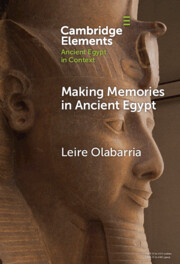Element contents
Making Memories in Ancient Egypt
Published online by Cambridge University Press: 24 March 2025
Summary
- Type
- Element
- Information
- Online ISBN: 9781009419017Publisher: Cambridge University PressPrint publication: 17 April 2025
References
This Element is free online from 25th March 2025 - 8th April 2025

